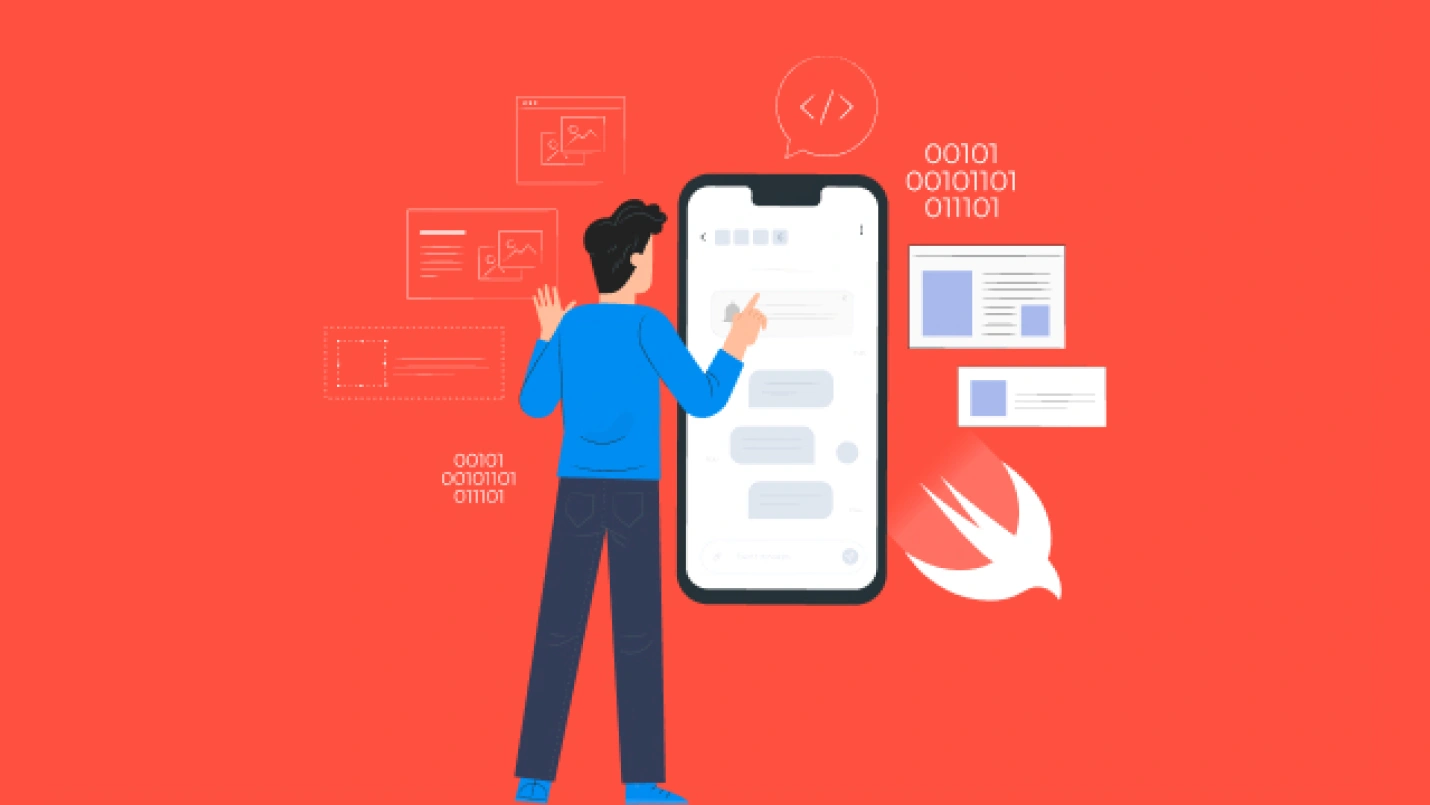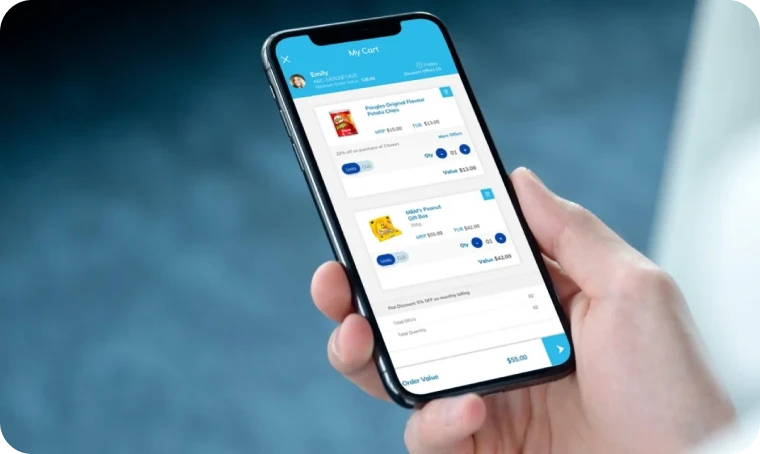Summary: Swift is a general-purpose programming language designed with an advanced approach to safety, performance, and software design patterns.
It aims to create the most refined language for various applications, including system programming, desktop & mobile apps, and cloud services. Swift is intended to make it easier for developers to write and maintain correct programs.
Swift for iOS was introduced in 2014 at Apple’s Worldwide Developers Conference. Since then, Swift has been a popular programming language for iOS, iPadOS, macOS, tvOS, watchOS, and Linux. The language works with Cocoa and Cocoa Touch Frameworks and the existing Objective-C code for Apple products.
The best part about Swift development is the intuitiveness and the conciseness of the code that helps create fast and responsive software.
According to TOIBE, Swift ranks on the 9th position (average) for 2020.
Swift development facilitates creating anything from systems programming, iOS apps, and SaaS products that work on the cloud-based model. The objective of Swift is to help developers draft clean code with minimal antipatterns in a hassle-free manner. Let’s understand how iOS development with Swift is the right choice for your projects.
What is Swift Development?
Swift is a fantastic way to write software, whether for phones, desktops, servers, or anything that runs code. — Swift.org
Swift became an open-source programming language in 2015. The objective was to create a sound programming language by making the technology available to all. It is friendly to novice programmers and is expressive and enjoyable simultaneously. Swift is compatible with iOS7, OSX10.9, and higher devices with operating systems. The core attributes of Swift include — Safety, Fastness, and Expressiveness. To understand its simplicity, here’s a “Hello World” code written in Swift:
Swift is different from other languages in that there are:
- No need for semicolons at the end of every line
- No need to import libraries as this is a complete code
- No need for main () function
What Are Some Prominent Features of Swift?
Swift makes code easier to read and write while still providing the developer with the control required in a true systems programming language. It supports inferred types, which make code cleaner and less prone to error, and modules, which eliminate headers and provide namespaces.
Swift also borrows from other languages; for example, named parameters from Objective-C are expressed in a clean syntax, making Swift APIs easy to read and maintain.
Here’s more detail about Swift –
- Safety: Swift manages memory automatically and hinders unsafe behavior in your code.
- Protocol: Swift enables you to define behavior on protocols rather than global functions or individual conformity.
- Closure syntax: Swift has a lightweight closure syntax with optimizations to facilitate clutter-free syntax and a definite style.
- Multi-platform: Swift is developed with multi-platform source suitability with platforms such as iOS, macOS, tvOS, watchOS, and Linux. You can build software compatible with all operating systems and portable to any platform and device. You can also build your operating system.
- Structure and classes: Swift determines a structure or class in a single file and makes the external interface accessible for use by other code.
- Tuples: Tuples enable us to develop and share value clusters, and it allows us to return multiple values as a single value.
- Open-source: Swift.org is an open-source framework with source code, a bug tracker, a mailing list, and a regular development list. It is operated by a team of developers who collaborate with the community. Swift is compatible with all Apple platforms and makes programming more straightforward, faster, and safer.
- Error management: Swift allows you to throw, catch, propagate, and manipulate errors at runtime.

We respect your privacy. Your information is safe.
Do I need a native iPhone app?
A native app is a software application written in a specific programming language and designed for a specific device platform in the mobile app development segment, such as iOS or Android. Swift or Objective-C is the programming language used to create native iOS apps. Many popular apps, such as Lyft, Pokemon Go, Twitter, etc., are fully native.
Native apps are fast, responsive, tap into broader functionalities, and do not compromise on UI/UX across platforms.
How to use swift to make an iPhone app?
Start by following these seven simple steps:
- Install Xcode and initiate a new iOS project.
- Add images to the Xcode project.
- Make Use of the SwiftUI Canvas Preview
- Insert an Image View
- Add values
- Set Up SwiftUI Views
- Run the application in the simulator
How Does Swift Differ From Objective-C?
Objective-C is best known today as a programming language for creating iPhone apps; its origins can be traced back to the 1980s. Soon after its creation, Steve Jobs’s company NeXT Computer Inc. licensed it to develop NeXTStep frameworks, and it later became the foundation of many iconic Apple products.
It was based on two other languages, C and Smalltalk. It obtained object syntax from Smalltalk and non-object-oriented syntax from the C language. And therefore, one of the features of the Objective-C programming language is that it is mature and tested by generations of developers.
On the other hand, Apple introduced Swift as a new programming language in June 2014. Swift is fundamentally similar to Objective-C but also includes several features that Objective-C does not. This article goes over Swift’s pros and cons in detail.
The Pros and Cons of Swift App Development
Here is an insight into Swift development’s benefits, downsides, and what the latest version offers.
1. Unraveling the Good: The Pros of Swift
Swift is a widely acceptable and lovable language among developers as it is intuitive and ensures faster development.
According to StackOverflow, 59.5% of developers are proceeding with Swift development technology and wish to continue with it in the times to come.
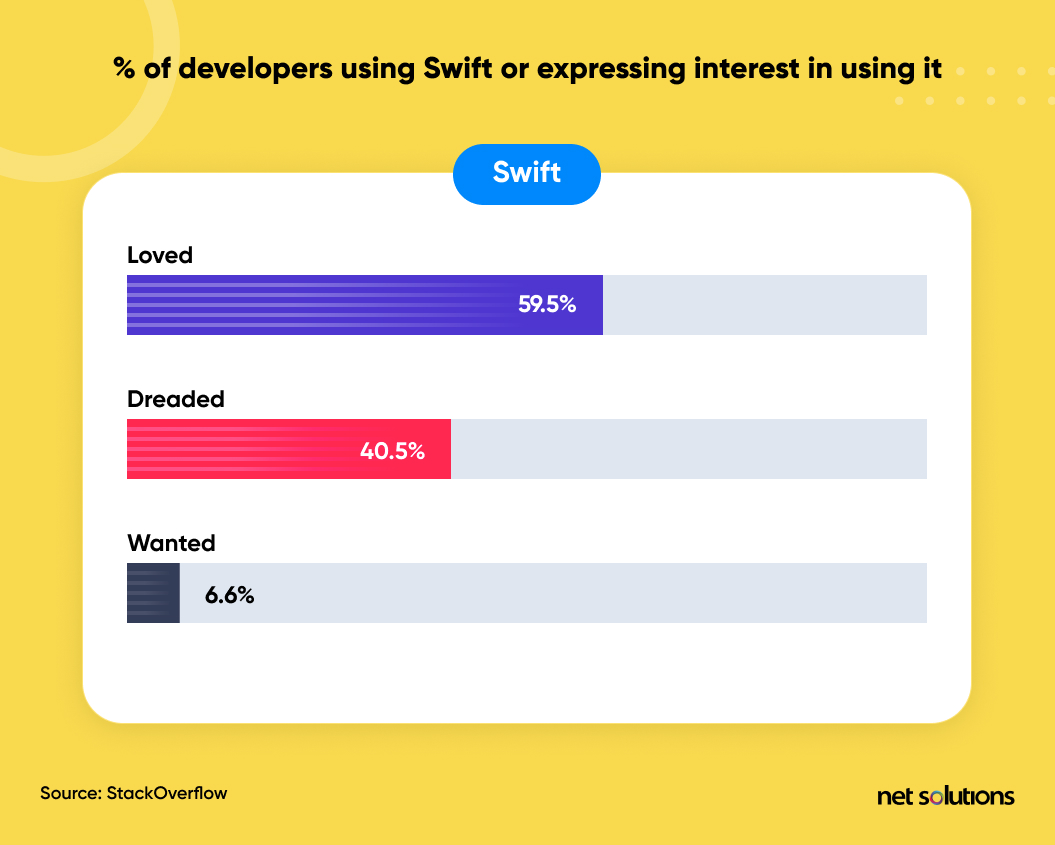
Here’s why your applications should be Swift powered:
a. Faster Development and Maintenance
Swift is a simple, clean, and expressive language with the most uncomplicated syntax. Its virtue of being concise reduces the development time since a lesser volume of code can perform the same task as Objective-C used to perform with the lengthy code.
The Swift code focuses on reducing antipatterns in the code, making it easy to test, iterate, deploy, and maintain.
Thanks to ARC – Automatic Reference Counting – Swift’s memory usage is well-managed, thus saving the coder the effort spent doing so manually.
b. Improved Safety
Safety is the core idea behind introducing the language to Swift developers. The clarity of the code makes it less error-prone as a result — there are lesser code crashes than in Objective-C.
Swift developers can instantly see the code errors and fix them immediately because of the short feedback loop. Bug fixing, thus, takes a short time and prevents the deployment of low-quality code.
c. Better Performance
Swift focuses on speed and better performance. The initial release of Swift claimed up to a 40% spike in performance compared to what Objective-C was delivering back then. Swift development is also considered faster performing than Objective-C (2.6x) and Python (8.4x) counterparts.
d. Lesser Memory Footprint with Dynamic Libraries
Swift occupies less memory space as it supports dynamic libraries. The absence of static libraries ensures that the memory is never clogged up. Since dynamic libraries have a copy in only one file, decreased footprints benefit when using a score of third-party code to build a Swift application.
e. Full-Stack Capabilities
Swift for server-end consolidates the best backend technologies developers likely need. This is what the power of the cloud can bring to the table. Swift allows you to share and reuse the code for the back and front. The upshot is the – shorter development time and lesser efforts put by the Swift developer.
f. Large Open-Source Community Support
Since Swift turned open-source on December 3, 2015, a large and rather vibrant developer community has formed around the language. And that is what makes learning and gaining expertise easier with the help of all-time available support. There is a massive contribution from developers for fixing bugs, which widens the Swift development scope.
g. Compatibility with Objective-C
There is a co-existence of Objective-C and Swift for iOS development. There are two possibilities — you can add features with Swift to a code that has already been written in Objective-C, and vice versa.
Both can be used interchangeably in a single project. This compatibility adds a cherry on the cake for both the developers and the organizations venturing into new projects.
h. Learnability with Playgrounds
Swift helps its users learn the language with the help of an application called “Swift Playgrounds.” Even if one doesn’t have an in-depth knowledge of Swift, one can easily get started with Playgrounds.
Newer Swift developers use this application to assist them in writing and testing their code without actually having to create the whole app. This helps shorten the learning curve and reduces the development time.
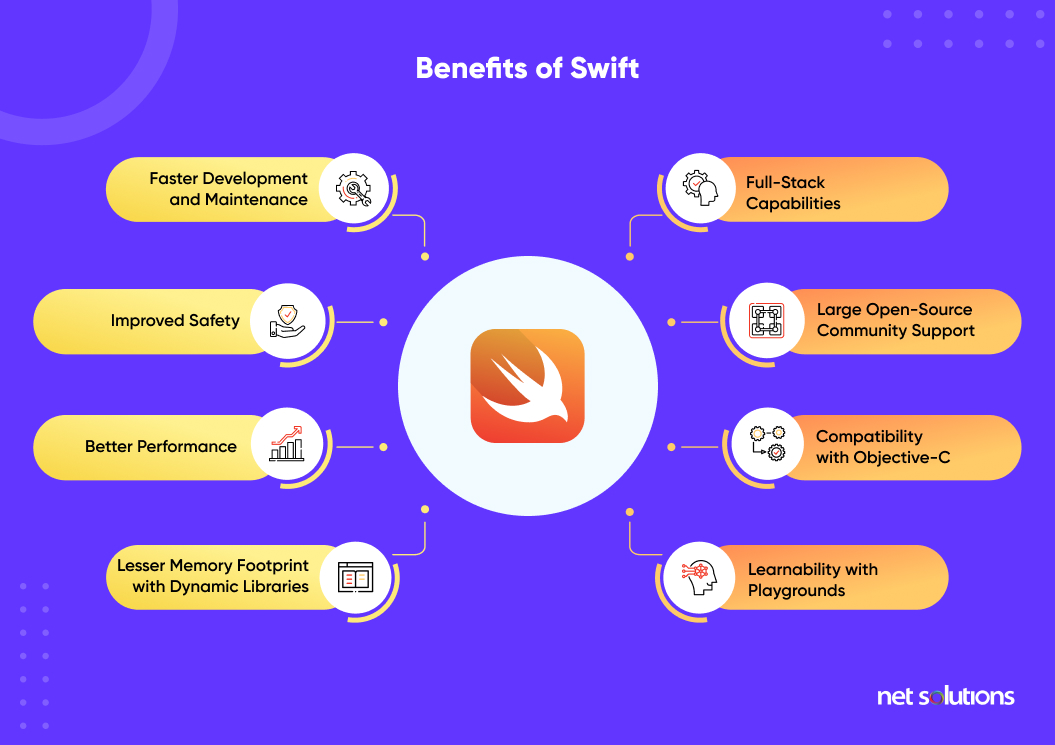
2. The Other Side of Swift
Having mentioned the pros, let’s discuss the disadvantages of Swift programming language.
a. Still a Young Language
There is no doubt that the language has progressed full-throttle, but it is still considered in its nascent stage, especially in comparison to Objective-C. This is why issues that need quick resolution crop up from time to time. Many of the available resources and tools dedicated to earlier Swift versions sometimes become incompatible with the newer releases.
b. Very Few Native Libraries and Tools
The notable downside of Swift — it still does not support enough native libraries. Although memory management may help developers with dynamic libraries, missing out on native libraries can be a mistake.
The same problem lies with the native tools, making them highly dependent on third-party tools, leading to compatibility issues.
c. Nascent Talent Pool
The open-source community is growing fast. However, if we look at other developer communities, the Swift community’s talent pool is at its nascent stage. The problem is that developers believe that Swift is hard to learn.
However, the demand for Swift developers is increasing at a high pace, but the opposite is true regarding the availability of skilled developers. Hence, the talent gap!
d. No Backwards Compatibility for SwiftUI
SwiftUI can be deployed on iOS 13 or its succeeding versions. macOS requires a 10.15 version or later; for tvOS, it is 13 or later; for watchOS, the version should be 6 and above.
This implies that Swift UI is not backward compatible as the newer features do not run smoothly with the older versions.
e. Poor Compatibility with IDEs and Third-Party Tools
As we mentioned before, by and large, there is an incompatibility with third-party tools because of frequent updates causing the older tool compatibility to go defunct. This makes it very difficult to find the right tools.
Apple’s official IDE, Xcode, isn’t great for native tools and support. Apart from this, developers also face issues with compilers, syntax, highlighting, autocomplete, and even refactoring tools.
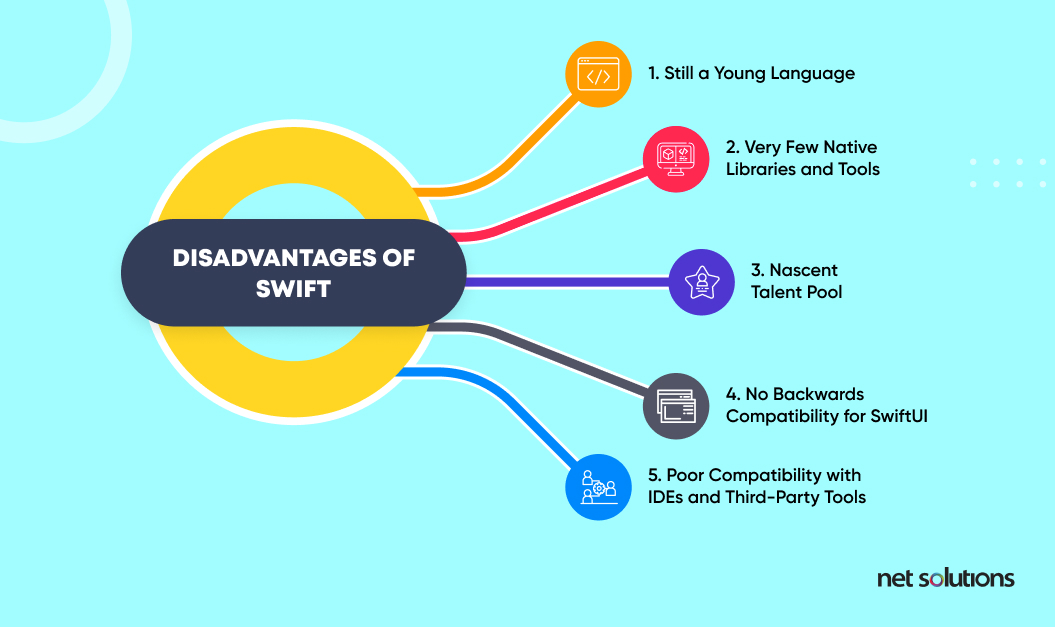
3. The Latest Version of Swift — Unlocking Swift 5.2
Apple released Swift 5.2 on March 24, 2020. The new features in Swift prioritize the developer’s experience by improving on:
- Compiler diagnostics
- Debugging reliability
- Dependencies handling in Swift Package Manager
- LSP and SwiftSyntax Tooling
- Build Algorithms
- Reversed Lazy Filtering Order
Popular Apps Built On Swift
Around 2000, companies used Swift, including big players like Uber, Slack, Lyft, Accenture, and Firefox. These big names deploy the programming language as it enables writing gold code that is easy and quick to work with. Thus, ensuring faster time to market. Here are some more:
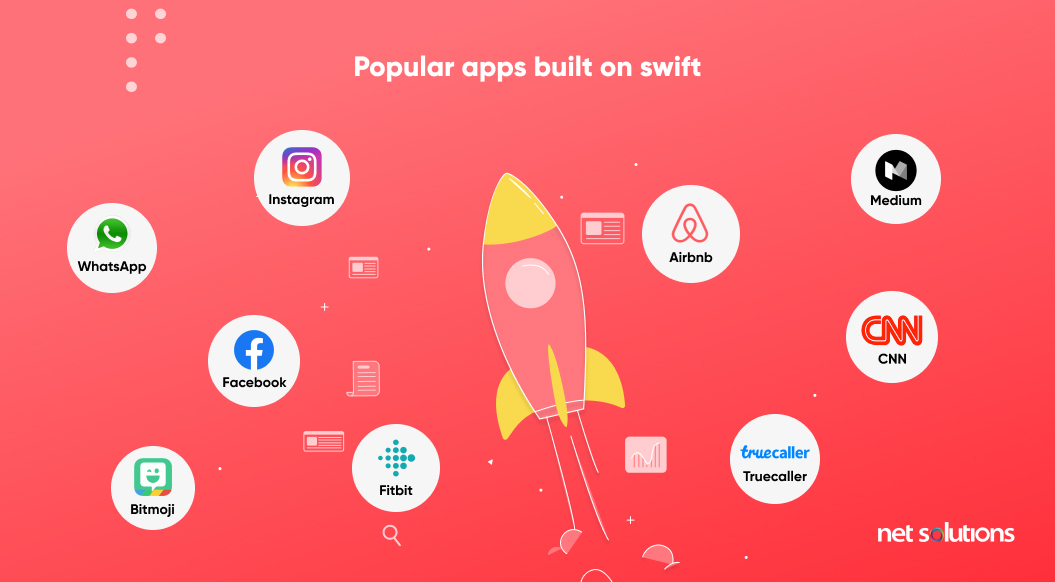
Net Solutions success story: Building a swift based app for Duelo
Our client, Ralph, envisioned a platform that would allow users to compete with their friends in legal, peer-to-peer challenges in which they could win real money without risking their own money.
Swift created immersive game-based learning experiences that engaged learners while improving their performance and productivity.
Frequently Asked Questions
Swift 5.2 is the latest Swift version that was released in March 2020. This current Swift version carries forward the features of the previous versions and add-ons that enhance the developer’s experience. The branched-out version of Swift 5.2, i.e., Swift 5.2.5 released in August 2020, which is the latest in the release series.
Swift Playgrounds is a revolutionary iPad app that makes Swift learning interactive and enjoyable. Real Swift code can be used to solve puzzles and guide a character through a 3D world. Swift Playgrounds does not require coding knowledge, making it ideal for beginners.
SwiftUI is a new way to create user interfaces for iOS apps. It enables developers to implement it for mobile app solutions for the iOS and define the user interface using Swift code.
Swift Package Manager is a tool that helps in managing Swift code distribution. It works with the Swift build system to automate the dependencies’ download, compilation, and linking. Swift 3.0 and later include the Package Manager.

